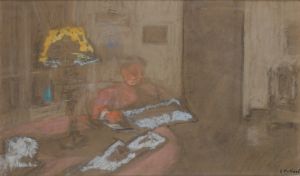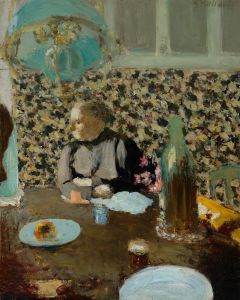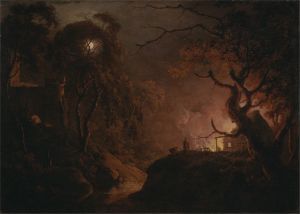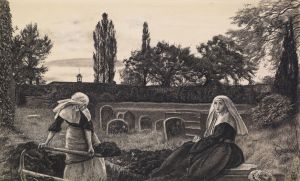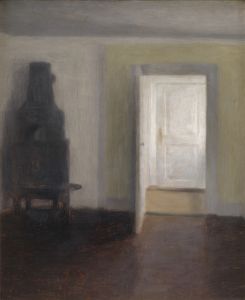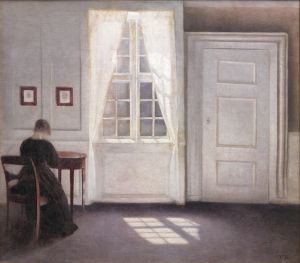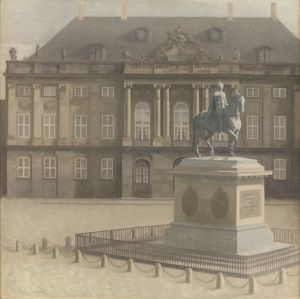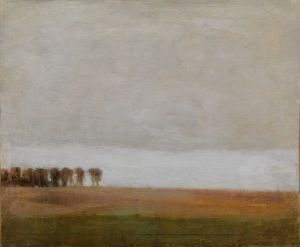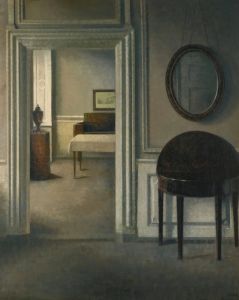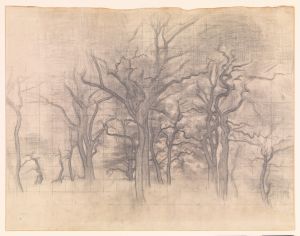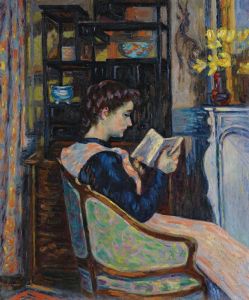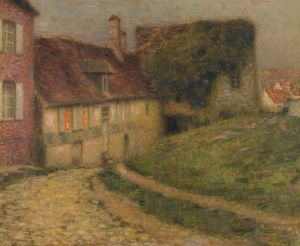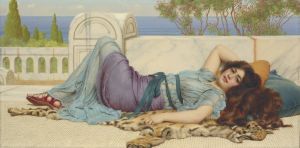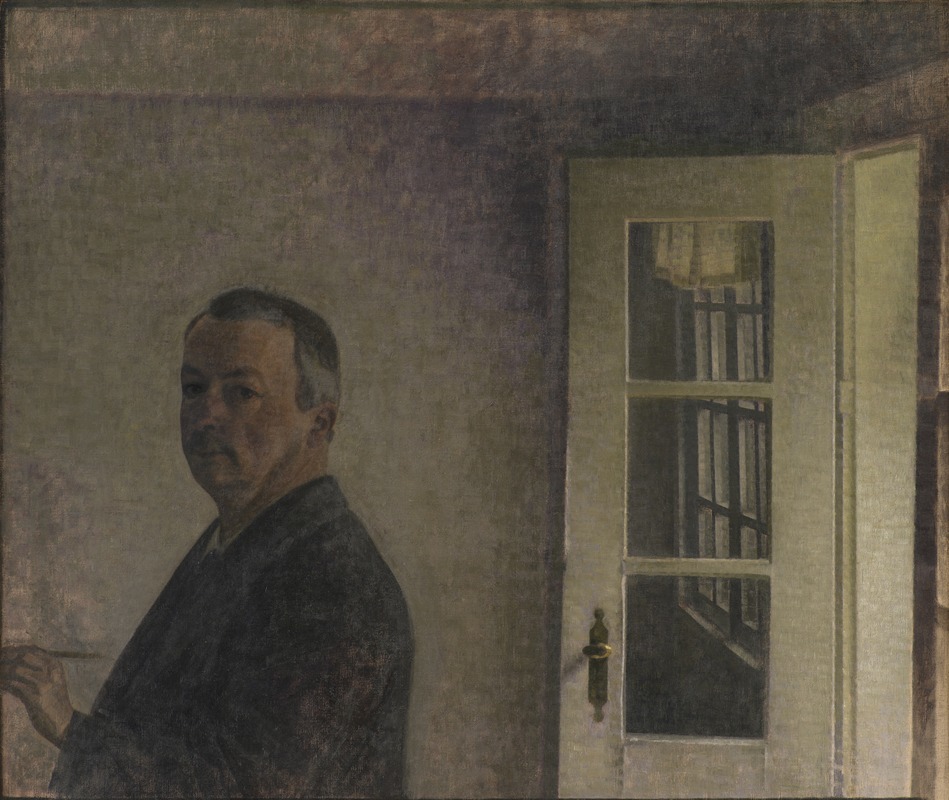
Self-Portrait. The Cottage Spurveskjul at Sorgenfri, North of Copenhagen
A hand-painted replica of Vilhelm Hammershøi’s masterpiece Self-Portrait. The Cottage Spurveskjul at Sorgenfri, North of Copenhagen, meticulously crafted by professional artists to capture the true essence of the original. Each piece is created with museum-quality canvas and rare mineral pigments, carefully painted by experienced artists with delicate brushstrokes and rich, layered colors to perfectly recreate the texture of the original artwork. Unlike machine-printed reproductions, this hand-painted version brings the painting to life, infused with the artist’s emotions and skill in every stroke. Whether for personal collection or home decoration, it instantly elevates the artistic atmosphere of any space.
Vilhelm Hammershøi (1864-1916) was a Danish painter known for his poetic, subdued, and often melancholic interior scenes and portraits. One of his notable works is "Self-Portrait. The Cottage Spurveskjul at Sorgenfri, North of Copenhagen," which reflects his characteristic style and thematic focus.
This painting, created in 1906, depicts Hammershøi himself in a contemplative pose, set against the backdrop of a modest cottage known as Spurveskjul, located in Sorgenfri, a suburb north of Copenhagen. The cottage was a place where Hammershøi spent time during the summer months, and it provided a serene environment that influenced many of his works.
In the self-portrait, Hammershøi presents himself in a straightforward, unembellished manner, typical of his approach to portraiture. He is dressed in simple, dark clothing, standing in a relaxed yet introspective stance. The background of the painting is equally understated, with the cottage's exterior rendered in muted tones that emphasize the tranquility and simplicity of the setting.
Hammershøi's use of light and shadow in this painting is subtle but effective, creating a sense of depth and atmosphere. The soft, diffused light that illuminates the scene is characteristic of his work, contributing to the overall mood of quiet reflection. The artist's restrained palette, dominated by shades of gray, white, and brown, further enhances the painting's contemplative quality.
The composition of "Self-Portrait. The Cottage Spurveskjul at Sorgenfri, North of Copenhagen" is carefully balanced, with Hammershøi positioned slightly off-center, drawing the viewer's eye to both the figure and the architectural elements of the cottage. This balance between the human presence and the surrounding environment is a recurring theme in Hammershøi's oeuvre, reflecting his interest in the interplay between people and their spaces.
Hammershøi's self-portraits are relatively rare, and this particular work is significant for its introspective nature and the insight it provides into the artist's personal world. The painting not only captures Hammershøi's likeness but also conveys a sense of his inner life and the quiet, contemplative atmosphere that pervades much of his work.
Throughout his career, Hammershøi was influenced by various artistic movements, including Symbolism and Realism, but he maintained a distinctive style that set him apart from his contemporaries. His focus on interior scenes, often devoid of human figures, and his meticulous attention to detail and composition have earned him a lasting place in the history of art.
"Self-Portrait. The Cottage Spurveskjul at Sorgenfri, North of Copenhagen" is an exemplary work that encapsulates many of the qualities that define Hammershøi's art. It is a testament to his ability to convey profound emotion and atmosphere through seemingly simple and restrained means. Today, Hammershøi's works are celebrated for their timeless beauty and their ability to evoke a deep sense of introspection and tranquility.





